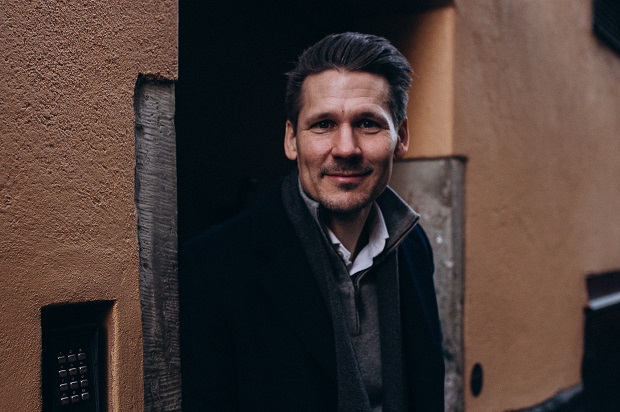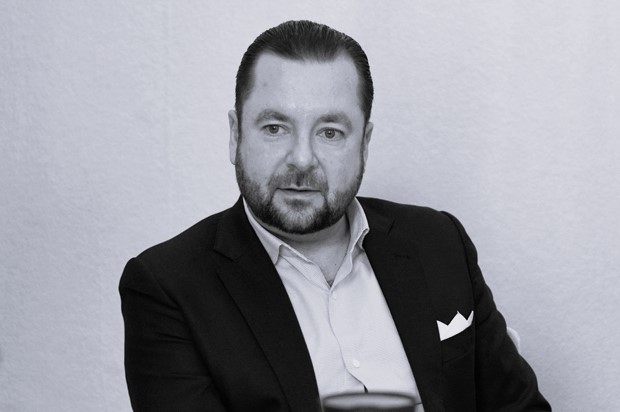
My take on the Nordics – Johan Bark
Johan Bark, Savills IM’s new head of client capital in the Nordics, talks about what attracted him to his new job after over a decade at BlackRock and his team’s plans for the Nordic region going ahead.
Johan Bark, joined Savills Investment Management’s Stockholm-based team at the start of the year. He takes on the challenges of his new job with over a decade of experience at BlackRock under his belt where he focused on institutional, family offices, wealth management and distribution clients, covering a broad set of strategies ranging from long-only to alternatives. Johan Bark also spent over five years at Swedbank in various roles, most recently as lead of manager selection for the banks model portfolio team. His hire comes after some major changes at Savills Investment Management that have led to a more expansive strategy in the Nordic region.
What attracted you to your current job?
My new firm, Savills Investment Management, has a 15-people-strong local team of investment professionals in the Nordic region. They didn’t, however, have a client relationship person based in the region before I joined. The team is very seasoned, has a great track record and a strong reputation in the Nordic region. I found this set-up to be an interesting opportunity to build out and strengthen the firm’s business with local investors and to become an ambassador for the firm in the Nordic region. It is a very appealing opportunity for any relationship driven person!
What are some of the most notable news at the company?
There are actually a few interesting things worth mentioning. We recently formed a strategic alliance with the South Korean insurance giant Samsung Life. Following their acquisition of a 25 per cent minority interest in Savills IM last year, they have agreed to seed a number of our strategies over the first four years of the partnership. Last year, we also finalised the acquisition of DRC Capital, one of the premier and top asset raising commercial real estate private debt managers in Europe. With these business events, we can now present a platform of solutions of both private equity and private debt real estate strategies to our clients.
What are you plans for the Nordic region going forward?
I was hired to support the firm’s strategy to expand our client base in the Nordic region. The plan is to reach out to our current, as well as prospective, investors in the region to tell them more about our non-listed real estate offering. We are relevant to investors looking to do fund investments in real estate, as well as to those investing in the asset class directly due to our capabilities to do funds and managed accounts, along with more transaction driven deals such as joint ventures and club deals. That’s why I want to brand us as a complete “house” for Nordic investors, where we can fill our clients need of exposure and access to domestic, wider Nordic, and international non-listed real estate assets across Europe and Asia Pacific. My goal is to present the wide array of solutions and expertise of private equity and private debt real estate that Savills IM and DRC Savills IM offer through our specialised teams located across our network of offices globally. I believe that our global reach combined with the knowledge of our investment professionals on the ground in the Nordics is a great backbone for additional partnerships in our region.
What do you see as some of the main trends among Nordic property investors and how are you looking to serve that need?
I would say diversification. Investors are looking to grow their real estate portfolios more internationally, as there may be tendencies for a local bias. They need this for diversification in an everchanging world and financial markets. Another thing that’s happening is the investment community becoming more bespoke in their mindset. They are more prone to solutions rather than just off the shelf products. This is due to guidelines in investments, pricing, ESG etcetera. This means that a solution-based mindset is a key in all business approaches.
Which are the best and worst parts of working with Nordic investors?
I suppose the best thing with the Nordic region and our people here is that we feel connected due to our history and geographical location. This makes the whole region feel smaller than it really is, and it becomes more like a community. Nordic investors are also sophisticated clients who are very experienced within their respective asset class focus. This makes discussions with clients professional and very enjoyable. However, I think sometimes clients tend to work with their established partners and there’s a limited exposure for non-established partners. This can of course be frustrating, but at the same time it’s also an exciting challenge to work towards becoming a partner with a new client.
What does it take for an asset manager to be successful in the Nordics on the real estate front?
A local presence is our DNA. I hope to offer our “global local” expertise to the Nordic investors through our locally managed real estate strategies throughout the world. The global local knowledge and proprietary relationships are key to successfully managing these non-listed real estate assets in their respective regions.
Manager will also need to have real commitment to the region with ongoing dialogues to cater for local clients’ needs, rather than a client relationship manager dropping in and out of the relationship. It’s key to know the clients in order to make the best use of their time. Lastly, but definitely not the least; a developed ESG framework is like a licence to operate in the Nordic region.
What are your most successful strategies in the Nordics and why?
Right now, our Asian equity real estate investments are an interesting opportunity to find diversification. There is less inflation in Asia vs. Europe and the US which might see the interest rates rise to a lesser degree in the region. Unlike in Europe, there are no big conflicts in the region or the bordering areas, such as the current war in Ukraine that affects the European markets. Also, Japan seems to be diverging away somewhat from the global economy with continued low inflation and therefore still low rates, not to forget that the Japanese Yen is at 20 years low against the US Dollar.
I would also like to highlight our CRE private debt strategies. The lack of liquidity continues to create more opportunities for non-bank lenders to identify attractive risk adjusted returns. Improved lending terms can also be negotiated which benefits the investors at a portfolio level.
What is the most difficult sell in the Nordics at the moment?
There is a huge focus on pricing and ESG related products. If you don’t match these with clients’ preferences, it’s tough to operate in the Nordic region effectively.
On a more geopolitical level, the war in Ukraine has put a damper on the market, which has become a bit of a question mark for further allocations to Europe at the moment. Clients are very focused on assessing their current holdings and exposures. Hopefully, a focus on Europe will come back soon again.
Going forward, what do you believe Nordic investors should consider or do to a greater extent?
Many investors have a bias to domestic real estate assets. In the current world, where the degree and speed of change is affecting the real estate markets, there might be a need to diversify portfolios towards a more international exposure.
Another thing I’ve observed is that investors, mainly due to the good historical returns, can have rather big allocations to listed real estate companies through mutual funds or single holdings. For investors that want to still have an allocation to real estate, looking at private equity and private debt real estate may be a good way to diversify away from listed company exposures. Especially in the new paradigm of the market with higher interest rates and inflation we seem to have entered. The illiquidity of non-listed real estate exposures creates less volatility and therefore offers a more stable allocation. Non-listed real estate can also be more transparent with investors having a larger control of their investment.
What do you see as some of the key ESG challenges at the moment among Nordic investors when it comes to real estate investments?
The biggest challenge for property owners and managers is ESG data reporting. It’s important to collect and analyse data from tenants comparably for different assets so firms can evaluate and compare progress against targets. Also, individual countries engage with ESG inconsistently. We all have similar sustainability targets and ambitions, but the progress may vary a lot between different regions, for instance the Nordic area versus Europe versus the US.
We can also acknowledge that there may be some challenges around costs of ESG improvements, and working out who, for instance, pays for upgrading buildings and who gets the benefit of the investments. Another is the actual process of refurbishing, for instance offices to make them more sustainable. However, what’s the impact on especially the “E” in ESG of constantly refurbishing offices? Is all the building material manufactured locally, and is there a circular handling of material? These are all question marks that require consideration.
Another challenge is that the industry does not create “greenwashing” strategies where the administration is a bigger burden than the impact of these products. We at Savills IM are currently going through a huge shift to start to position assets to become net zero carbon by 2040 with the aim of achieving restorative outcomes by 2050. With restorative real estate, our ambition is actually to put more back into society and the planet than we take, leaving it better, rather than minimising harm or doing no harm. We have recently put out a publication on our Net Zero Carbon Pathway, what we intend to execute to get there.
What book would you recommend to colleagues?
Principles by Ray Dalio, one of the most successful investors of our time. The book gives a reader more than a hundred practical tips and lessons. I think everyone can use at least a few of these tips as a wisdom guide for a successful private and professional life. In other words, a great inspiration for everyone and/or for their family, their children and friends.
What do you enjoy doing outside office hours?
I love being active while spending time with my family and with friends. Nowadays, with limited free time, I tend to meet friends for sporting activities like playing a round of golf, downhill skiing, or hitting the gym together. I also very much enjoy staying updated on current affairs and I’m keeping myself up to date by continuously trying to learn new things.



